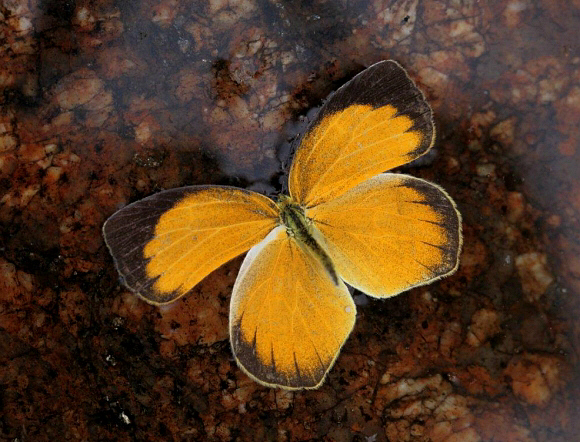
Introduction
The 12 species which are currently placed in the genus Pyrisitia were originally included within the pan-tropical genus Eurema.
These smallish butterflies are characterised by having yellow, orange or white uppersides, with dark apical markings. The forewings have a strongly curved costa, and in most species have a squarish apex. The hindwings are rounded in most species, but are projected to a point in proterpia, and in the related Eurema species mexicana, xantochlora, arbela and salome.
Pyrisitia proterpia is found from the southern states of the USA to Peru, and on the islands of Cuba, Jamaica and Hispaniola in the Caribbean Sea.

Habitats
This species can be found in disturbed open grassy habitats including forest clearings, roadsides and riverbanks at elevations between sea level and about 1200m.
Lifecycle
The larval foodplant is Desmodium (Fabaceae).
Adult behaviour
Males are usually encountered in two’s or three’s, imbibing dissolved minerals from damp ground at the edge of ditches or roadside banks in lightly forested areas. Females are often seen nectaring at flowers along roadsides and riverbanks, or exploring sunny wood edge habitats in search of egg-laying sites. In the north of its range the butterfly is more abundant at the beginning of the rainy season when nectar sources are prolific; but in Amazonia it is commoner in the dry season.
The flight is fluttery but fairly rapid, and close to the ground.
